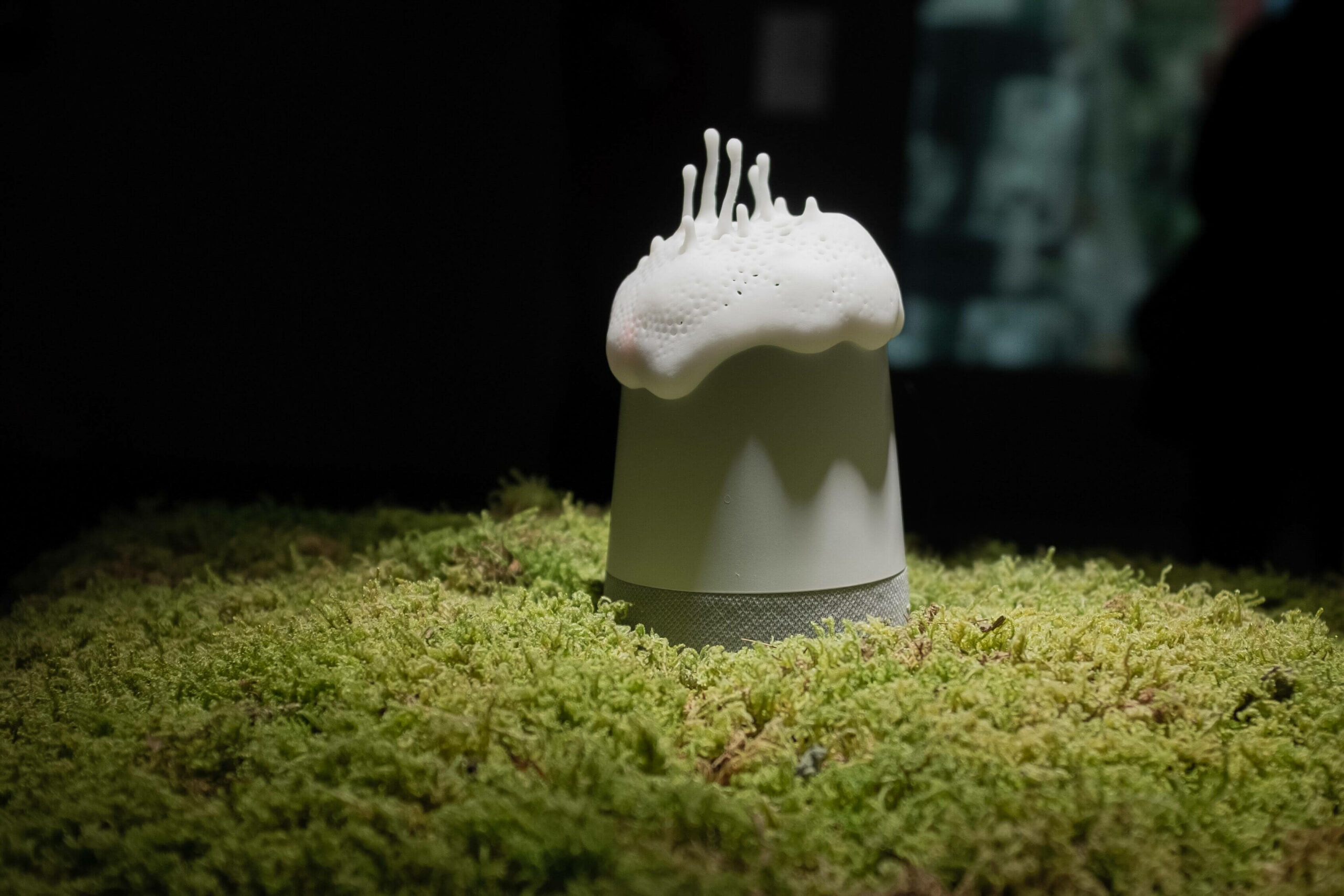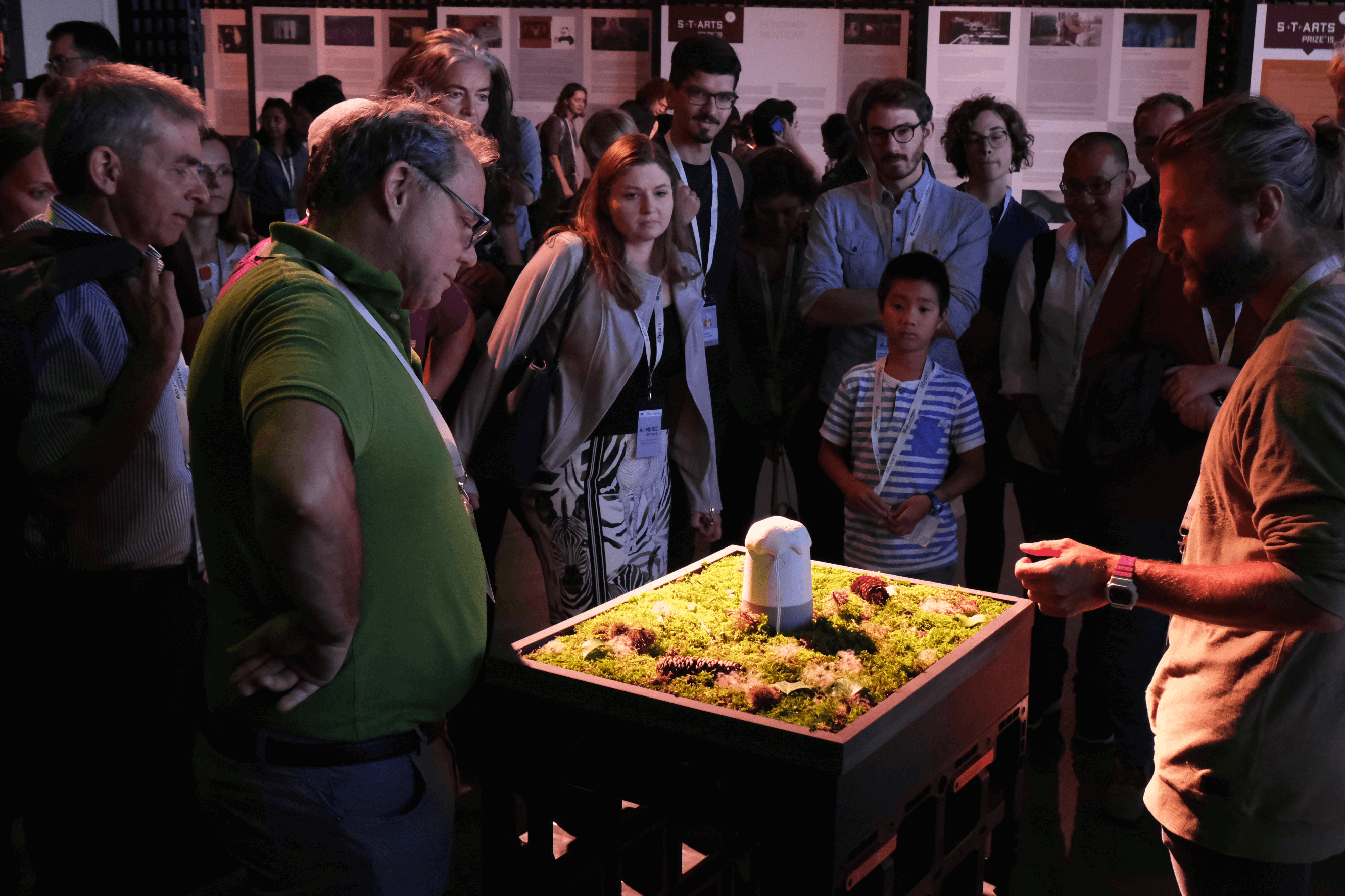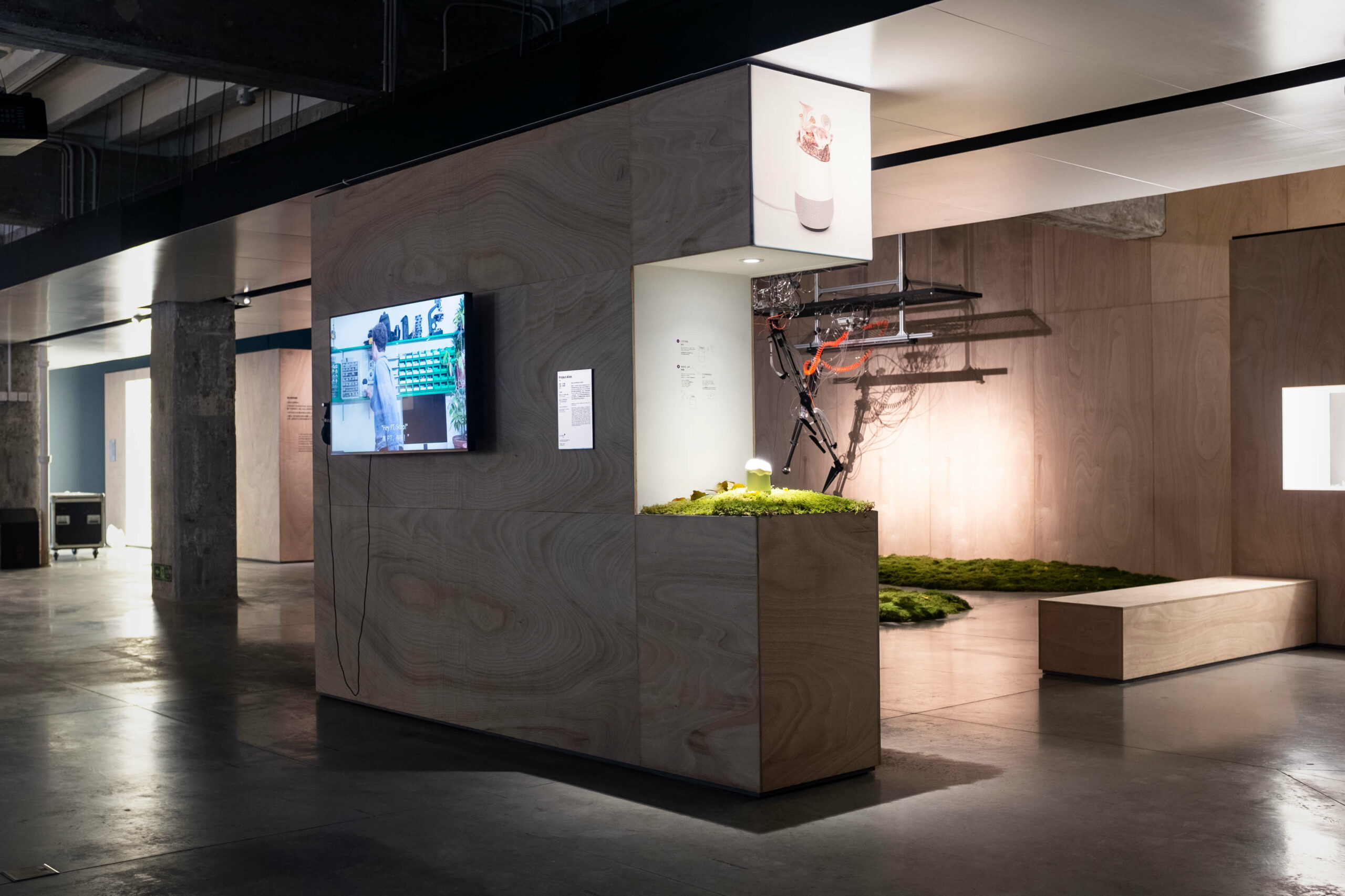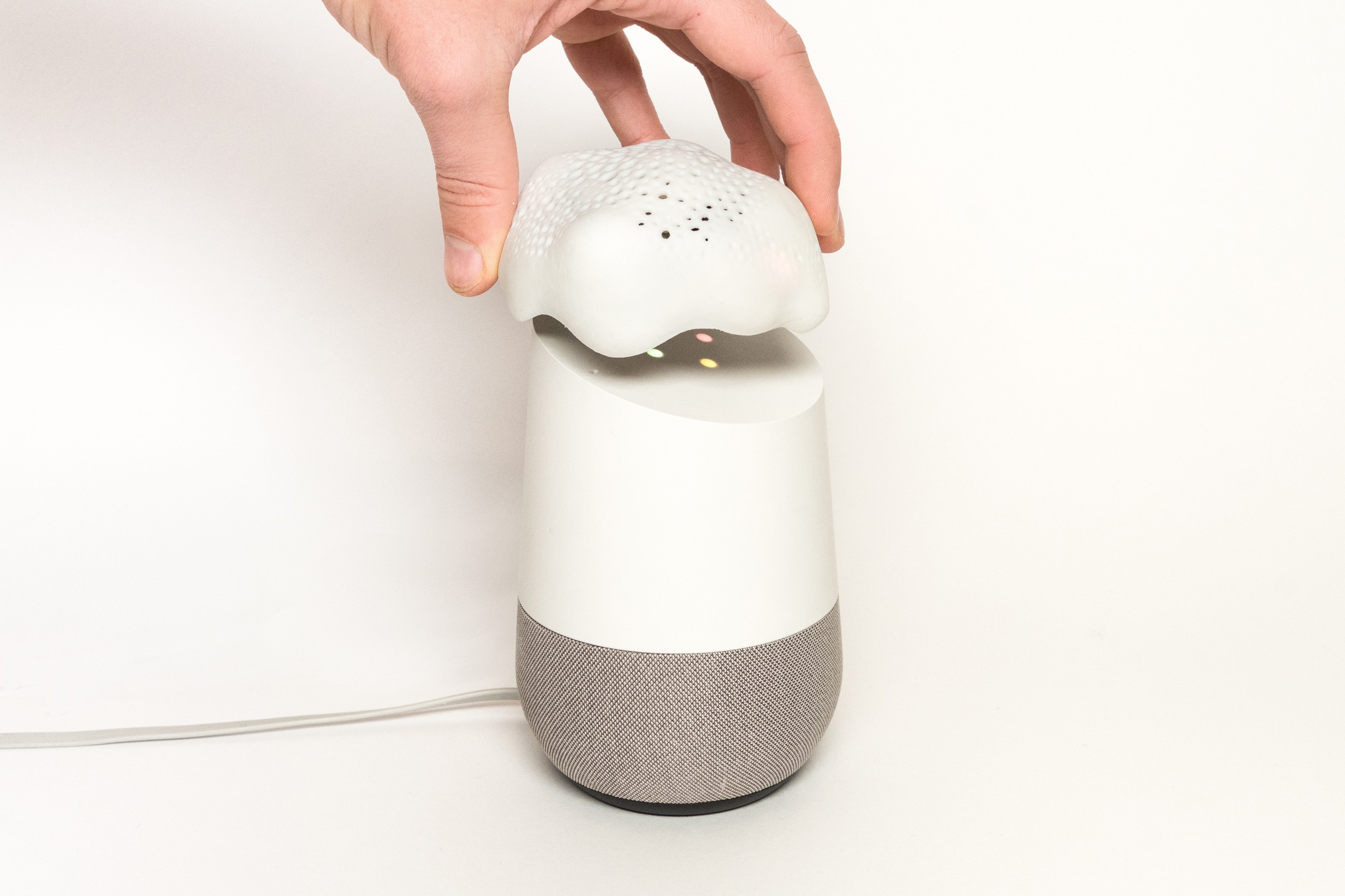
Project Alias
2019, IoT hack, machine learning, speech recognition, digital activism
In collaboration with
Bjørn Karmann
Tools used
Raspberry Pi, Python, css/html, javascript, Keras

Alias is a teachable “parasite” that is designed to give users more control over their smart assistants, both when it comes to customization and privacy. Through a simple app the user can train Alias to react on a custom wake-word sound, and once trained, Alias can take control over your home assistant by activating it for you.
When you don't use it, Alias will make sure the assistant is paralyzed and unable to listen by interrupting its microphones.
See the project on Github
Alias acts as a middle-man device that is designed to appropriate any voice activated device. Equipped with speakers and a microphone, Alias is able to communicate and manipulate the home assistant when placed on top of it. The speakers of Alias are used to interrupt the assistance with a constant low noise/sound that feeds directly into the microphone of the assistant.
First when Alias recognises the user created wake-word, it stops the noise and quietly activates the assistant with a sound recording of the original wake-word. From here the assistant can be used as normally.
The wake word detection is made with a small neural network that runs locally on Alias, which can be trained and modified through live examples. The app acts as a controller to reset, train and turn on/off Alias. The way Alias manipulates the home assistance allow to to create new custom functionalities and commands that the products were not originally intended for. Alias can be programmed to send any speech commands to the assistant’s speakers, which leaves us with a lot of new possibilities.
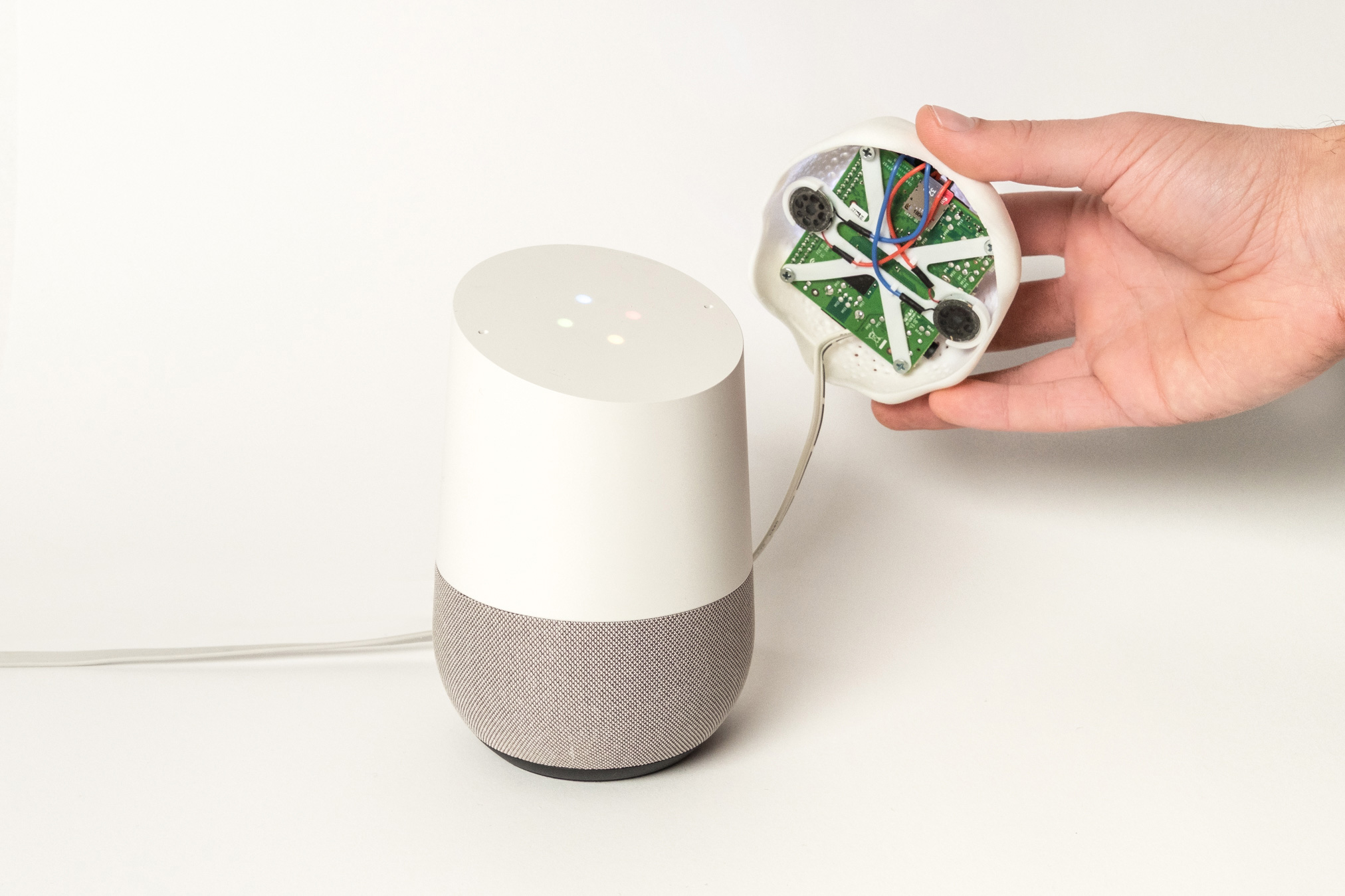
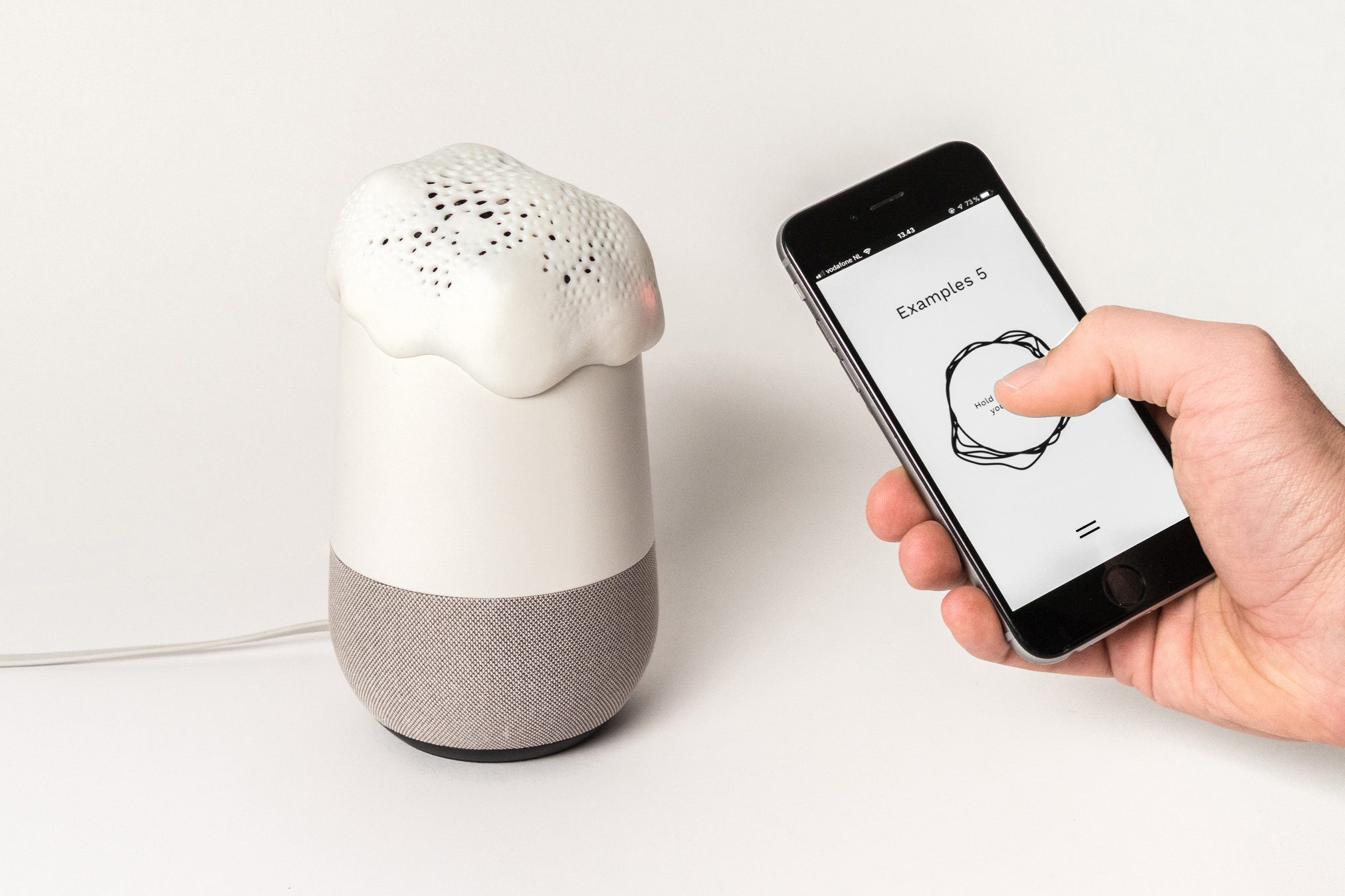
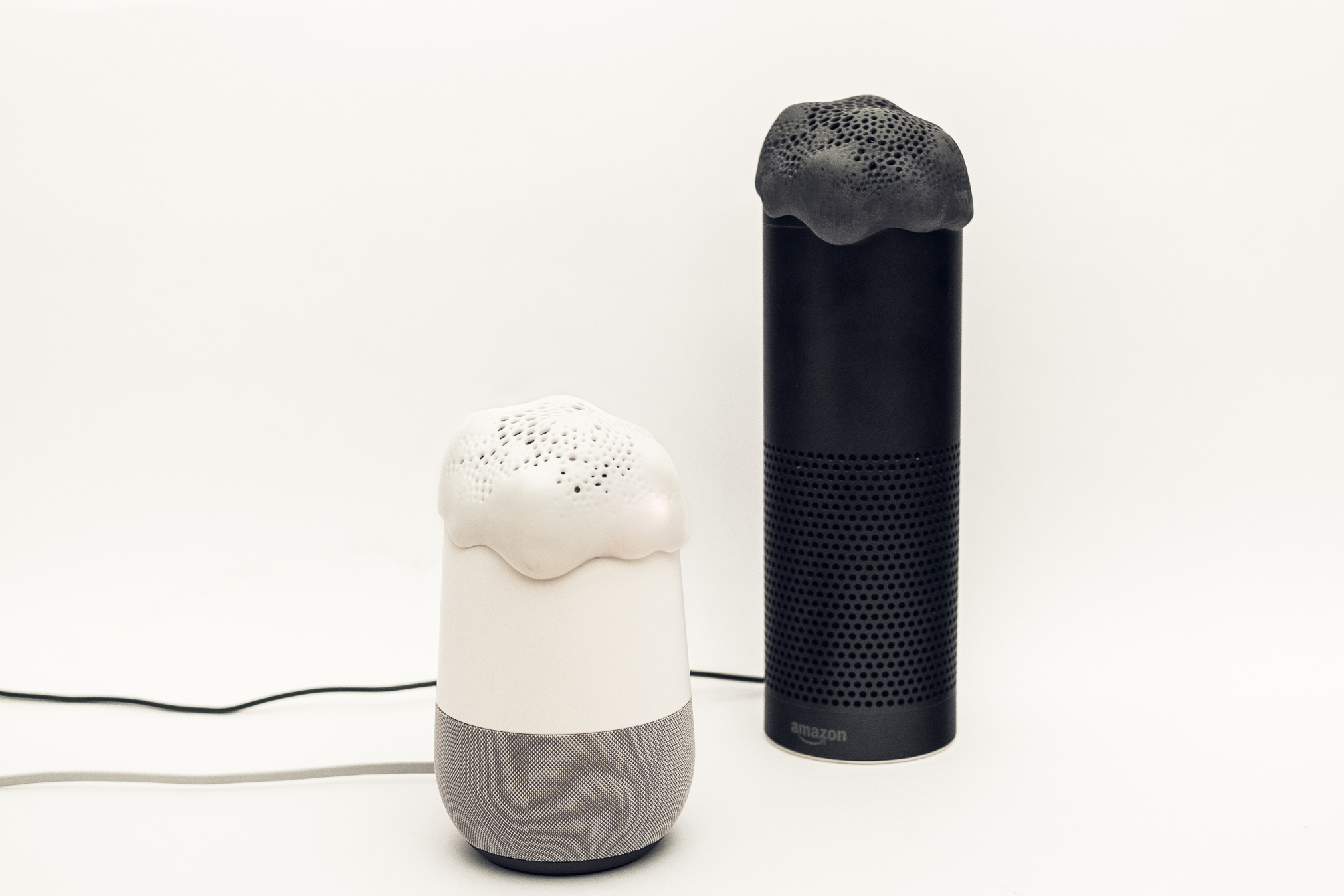
Our relationship with technology is formed from how we interact with it. However, commercial smart products for the home tends to treat the user as passive consumers. Especially smart-home assistance has shown design patterns that limits the possibilities of interaction and agency from the user perspective, even in the most private and personal sphere; the home.
Our interaction patterns are highly determined by the designers of these products, and with Alias we are interested in how this power relation can be redefined, especially when it comes to privacy. The exciting future that “smart” technologies can give us often comes with conditions that diminish our privacy. With Alias we want to challenge this condition and ask what kind of “smart” we actually want in the future.

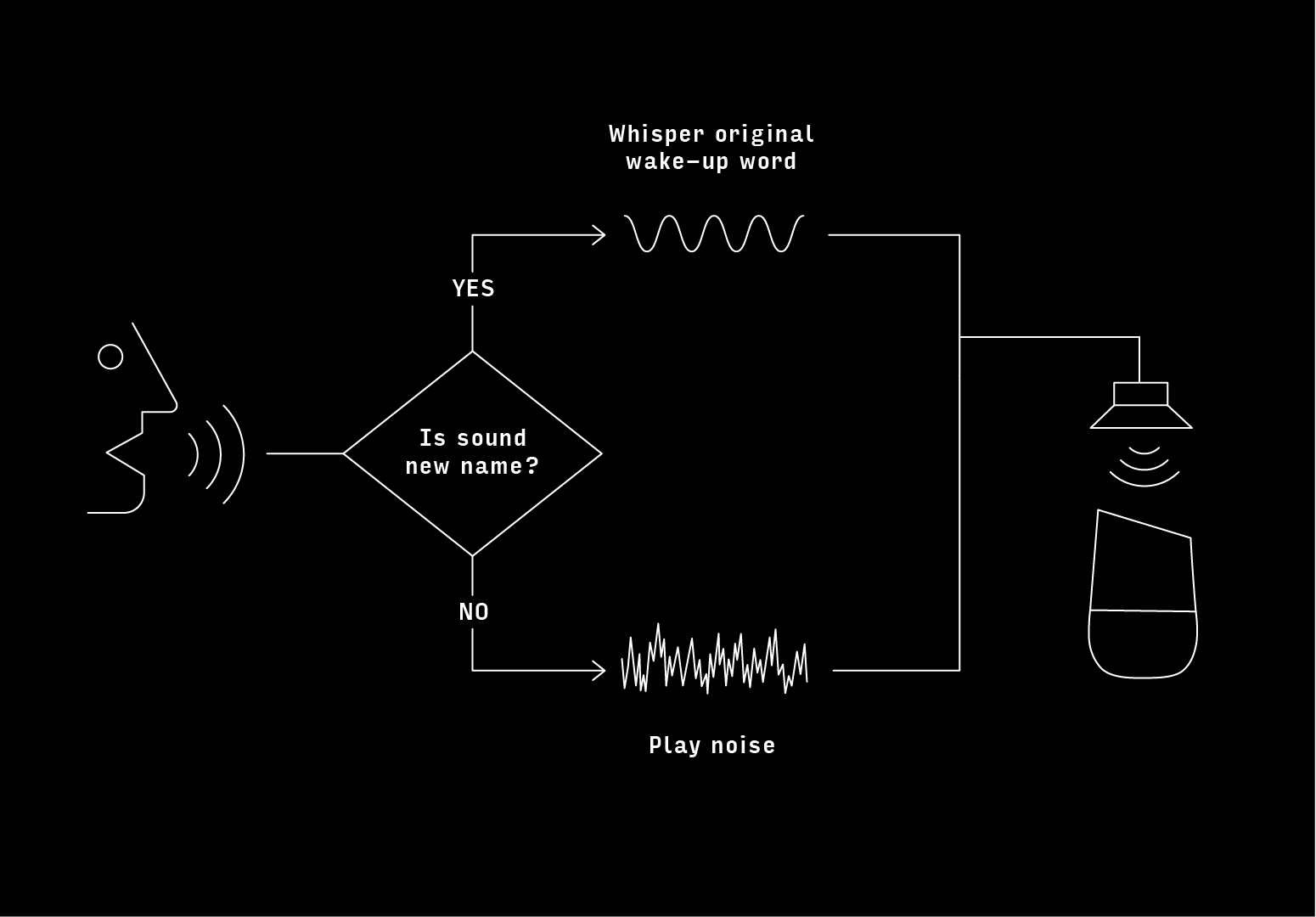
We looked at how cordyceps fungus and viruses can appropriate and control insects to fulfil their own agendas and were inspired to create our own parasite for smart home systems. Therefore we started Project Alias to demonstrate how maker-culture can be used to redefine our relationship with smart home technologies, by delegating more power from the designers to the end users of the products.
Meaning of “Alias”:
1. Used to indicate that a named person is also known or more familiar under another specified name.
2. Misidentify (a signal frequency), introducing distortion or error.
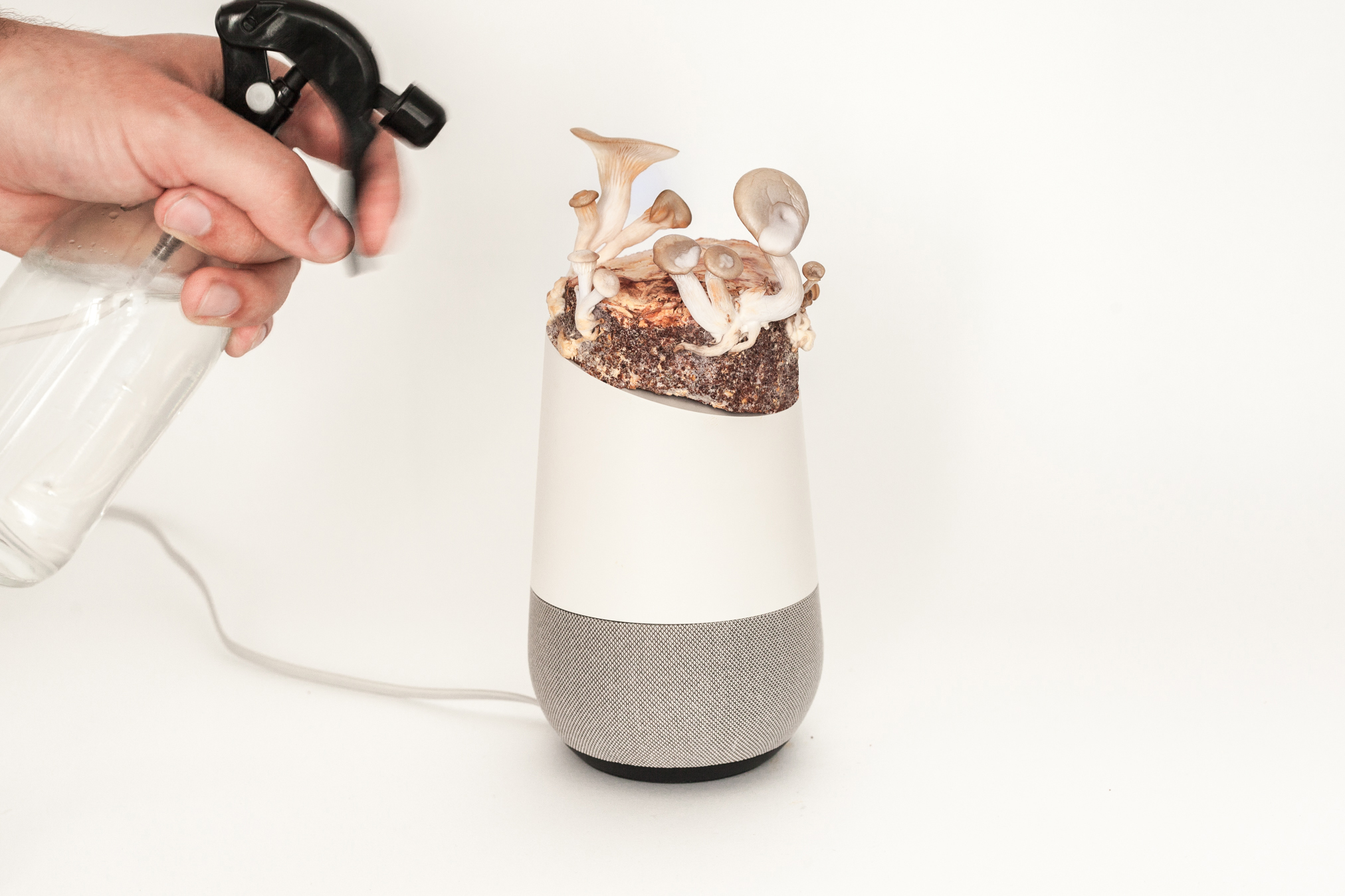


Our solution of placing a small microphone directly onto the speakers of the assistant inspired a lot of new ideas, and we realized that we could let the user configure custom shortcuts but let Alias send longer commands to the assistant. Before we used an audio snippet of the original wake-word to wake up the assistant but by implementing a text to speech algorithm (Espeak) we have now introduced a new design that makes it possible to not only change the wake-word but also decide exactly what command to send.
There is no limit to how many wake-words/commands the Alias can be configured with at once, so it’s possible to both give it a new name, but also to e.g start a whole service from one wake-word. One example could be that by saying “Funky time”, Alias could say “Ok Google, play some funky music on Spotify”.
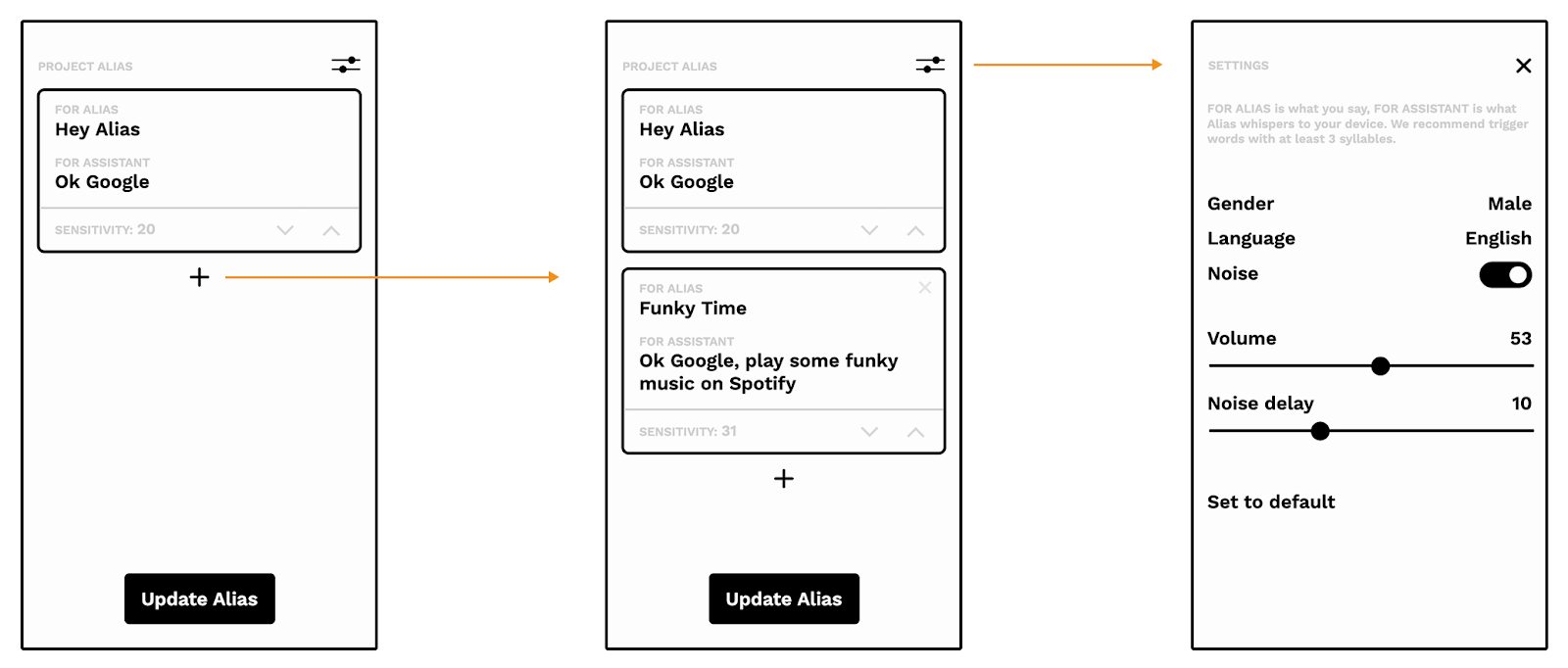
Having this new programmable voice that communicates with the assistant made us think of different ways to create “data noise”, and make the user more anonymous. Therefore we added a settings page where the user can configure different parameters. We added a gender option to let the user choose what gender the assistant should perceive when Alias whispers the command. By changing to the opposite gender you will be able to introduce false labeling into the assistant's algorithm. This confusion might lead to interesting interactions and answers.
We also added a language option to change the language of Alias when it speaks to your assistant. This is to introduce another layer of false labeling that makes the system label you with a different nationality. To use this feature the command for the assistant has to be written in the selected language. Besides that, we added a set of different options to optimize the performance of Alias eg.g sensitivity, noise delay, and volume.
